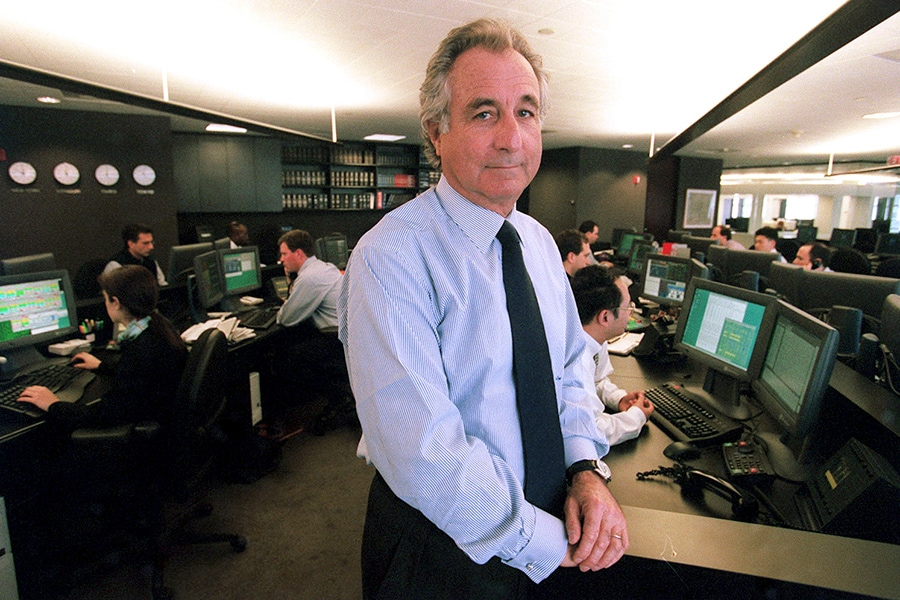
Bernie Madoff, architect of largest ponzi scheme in history, is dead at 82
Madoff's enormous fraud began among friends, relatives and country club acquaintances in Manhattan and Long Island but ultimately grew to encompass major charities, universities, institutional investors, and wealthy families in Europe, Latin America and Asia
 Bernard Madoff, then chairman of Bernard L. Madoff Investment Securities, on the trading floor in New York, on Dec. 30, 1999. Madoff, the one-time senior statesman of Wall Street who in 2008 became the human face of an era of financial misdeeds and missteps for running the largest and possibly most devastating Ponzi scheme in financial history, died on Wednesday, April 14, 2021. He was 82; Image: Ruby Washington/The New York Times
Bernard Madoff, then chairman of Bernard L. Madoff Investment Securities, on the trading floor in New York, on Dec. 30, 1999. Madoff, the one-time senior statesman of Wall Street who in 2008 became the human face of an era of financial misdeeds and missteps for running the largest and possibly most devastating Ponzi scheme in financial history, died on Wednesday, April 14, 2021. He was 82; Image: Ruby Washington/The New York Times
Bernard L. Madoff, the one-time senior statesman of Wall Street who in 2008 became the human face of an era of financial misdeeds and missteps for running the largest and possibly most devastating Ponzi scheme in financial history, died on Wednesday in a federal prison hospital in Butner, North Carolina. He was 82.
The Federal Bureau of Prisons confirmed the death at the Federal Medical Center, part of the Butner Federal Correctional Complex.
Madoff, who was serving a 150-year prison sentence, had asked for early release in February 2020, saying in a court filing that he had less than 18 months to live after entering the final stages of kidney disease and that he had been admitted to palliative care.
In phone interviews with The Washington Post at the time, Madoff expressed remorse for his misdeeds, saying he had “made a terrible mistake.”
“I’m terminally ill,” he said. “There’s no cure for my type of disease. So, you know, I’ve served. I’ve served 11 years already, and, quite frankly, I’ve suffered through it.”
©2019 New York Times News Service




